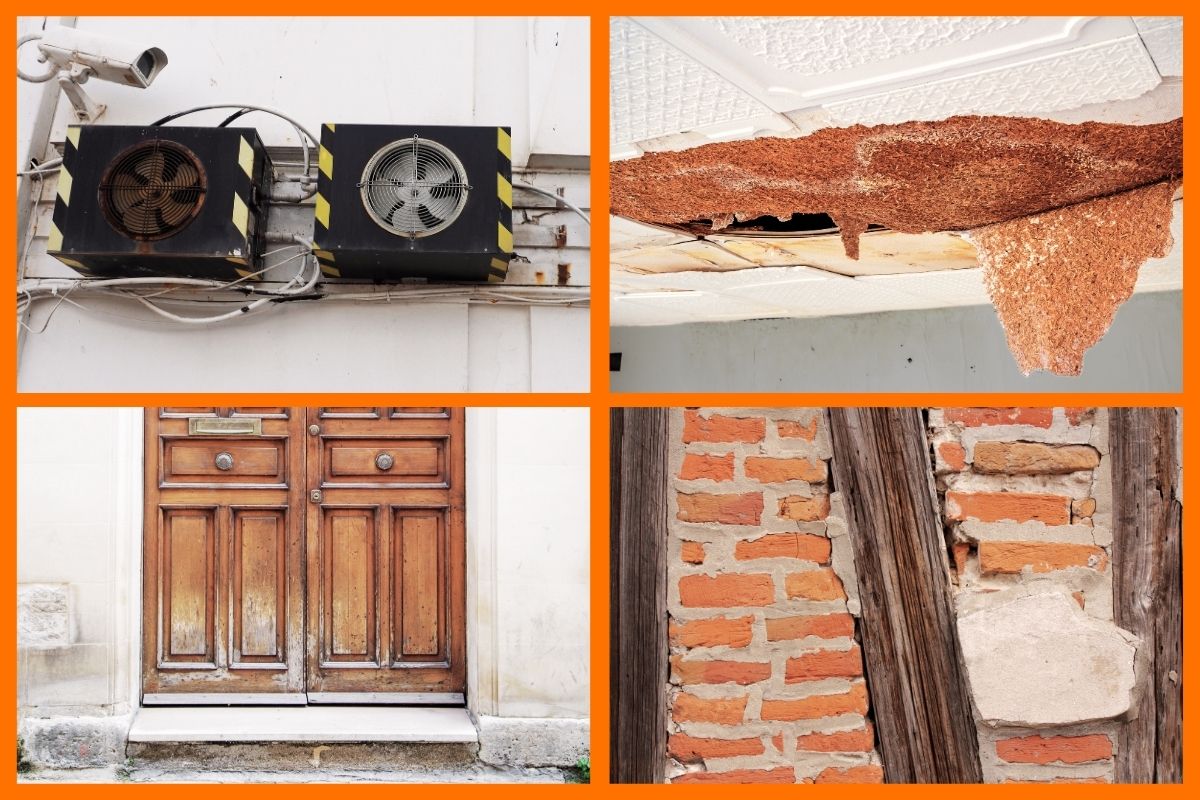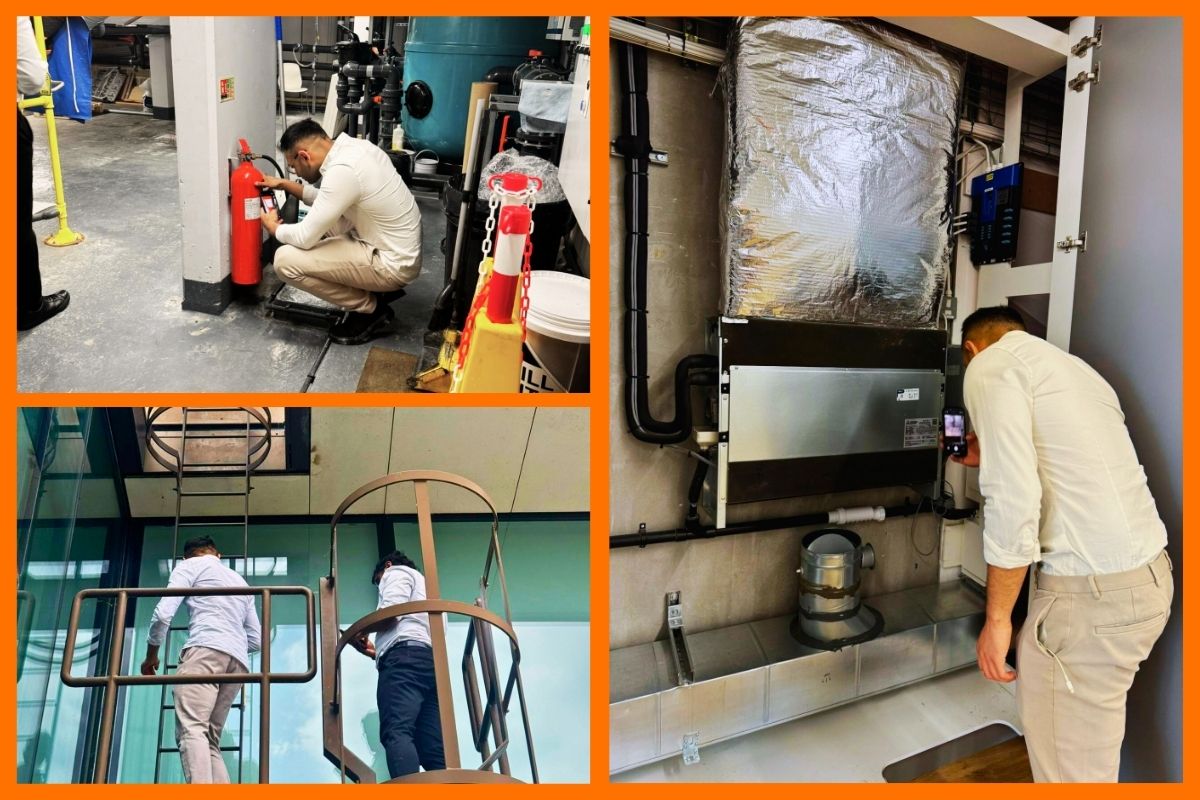Ageing Assets: Managing the Risks in the Facilities Management Industry
20-September-2024
20-September-2024 0:00
in General
by Admin
In the dynamic world of facilities management, ageing assets present significant challenges. From structural deterioration to increased maintenance costs, the risks associated with ageing infrastructure can impact both operational efficiency and financial health. To ensure long-term sustainability and optimise performance, effective management of ageing assets is crucial. We know that it's important to mitigate the risks of ageing assets, and here is our Facilities Management Guide for just that.

Understanding the Risks
As buildings and infrastructure age, they become more susceptible to various risks. These risks can be categorised into three main areas:
-
Structural Deterioration:
Over time, buildings and infrastructure can experience wear and tear, leading to structural issues. This can include:
-
Roof deterioration: Leaks, sagging, and structural damage can compromise building integrity and lead to costly repairs.
-
Foundation settlement: Uneven settling can cause cracks, structural instability, and water infiltration.
-
Facade degradation: Weathering, corrosion, and material deterioration can affect the appearance and structural integrity of building exteriors.
-
Compliance and Safety:
Ageing facilities may not meet current building codes and safety regulations. This can result in:
-
Penalties and fines: Non-compliance can lead to legal consequences and financial penalties.
-
Safety hazards: Outdated systems and equipment may pose risks to occupants, such as fire hazards, electrical faults, or exposure to hazardous materials.
-
Reduced property value: Non-compliance can negatively impact property value and marketability.
-
Operational Inefficiencies:
Older facilities often have outdated systems and components leading to higher energy consumption and maintenance costs. This includes:
-
Inefficient HVAC systems: Outdated HVAC systems can consume more energy and fail to provide adequate heating or cooling.
-
Outdated electrical systems: Ageing electrical systems can be inefficient, prone to failures, and pose safety risks.
-
Inefficient lighting: Older lighting fixtures can consume more energy and contribute to poor indoor air quality.

Strategies for Managing Risks
To mitigate the risks associated with ageing assets, facilities managers, building owners and real estate managers must adopt a proactive approach that includes:
-
Proactive Maintenance:
-
Regular inspections: Conduct regular inspections of building systems and components to identify potential issues early.
-
Preventive maintenance schedules: Develop and implement a comprehensive preventive maintenance schedule to address wear and tear before it becomes critical.
-
Condition monitoring: Use condition-based maintenance techniques to monitor asset performance and schedule maintenance based on actual needs.
-
Modernisation: Upgrade outdated systems and components to improve efficiency and compliance. This includes retrofitting HVAC systems, replacing old windows, and updating electrical systems.
-
Energy Efficiency Upgrades:
-
Energy audits: Conduct regular energy audits to identify areas for improvement and implement energy-saving measures.
-
Efficient equipment: Replace outdated equipment with more energy-efficient models.
-
Renewable energy: Explore opportunities to integrate renewable energy sources, such as solar panels or wind turbines.
-
Risk Assessment and Monitoring:
-
Regular assessments: Conduct regular risk assessments to identify potential hazards and prioritise mitigation efforts.
-
Predictive analytics: Use predictive analytics tools to identify potential failures and schedule maintenance proactively.
-
Monitoring systems: Install monitoring systems to track asset performance and detect anomalies.
-
Compliance and Safety Upgrades:
-
Stay informed: Keep up-to-date with changes in building codes and safety regulations.
-
Regular updates: Conduct regular updates to ensure facilities meet current standards.
-
Health and safety programmes: Implement comprehensive health and safety programmes to address potential risks and ensure compliance.
-
Financial Planning:
-
Capital planning: Develop a long-term capital plan to allocate funds for major repairs, upgrades, and replacements.
-
Cost-benefit analysis: Evaluate the cost-effectiveness of different maintenance and upgrade options.
-
Financial modelling: Use financial modelling tools to assess the potential impact of different scenarios on operating costs and property value.
Conclusion
By understanding the risks associated with ageing assets and implementing effective management strategies, facilities managers can extend the life of their buildings, reduce costs, and ensure a safe and comfortable environment for occupants. A proactive approach that combines regular maintenance, energy efficiency upgrades, risk assessment, compliance measures, and financial planning is essential for navigating the challenges of ageing infrastructure.
Karsons Consulting offers comprehensive facilities management solutions designed to extend the lifespan of ageing assets, reduce maintenance costs, and ensure optimal performance. Our expert team uses advanced analytics and monitoring tools to identify potential risks early, optimise maintenance schedules, and improve overall asset management efficiency.
Let's discuss how Karsons Consulting can help you manage the risks of ageing assets and optimise your facilities management operations. Contact us today to schedule a consultation.
020 3282 7605 | info@karsonsconsulting.com

